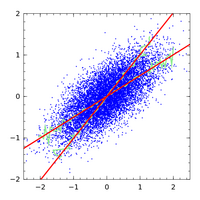Errors-in-variables model

Imagine you have a toy car that rolls forward when you push it. But sometimes, the surface you're playing on is bumpy or has pebbles, and the car doesn't roll as far as it should. This is kind of like an "errors-in-variables" model in science.
When we do science experiments, we usually measure things like temperature, time, or distance. But sometimes, there are small errors or variations in our measurements. Maybe the thermometer isn't perfectly calibrated, or we can't measure something exactly right because of the tools we're using.
The errors-in-variables model is a way for scientists to try to understand these small variations in their data. It's like they're saying, "OK, we know our measurements aren't perfect, but let's see if we can still figure out what's going on."
To use the errors-in-variables model, scientists will try to estimate how much error there is in their data. They might do this by making multiple measurements of the same thing, or by comparing their measurements to accepted standards.
Then, they'll use a special formula (kind of like a math trick) to try to correct for these errors. This makes their data more accurate, so they can draw better conclusions about their experiments.
In the end, the errors-in-variables model is just a tool that scientists use to make sure they're not fooled by small errors in their data. It's like putting air in your toy car's tires so it can roll smoother over bumps in the road.
When we do science experiments, we usually measure things like temperature, time, or distance. But sometimes, there are small errors or variations in our measurements. Maybe the thermometer isn't perfectly calibrated, or we can't measure something exactly right because of the tools we're using.
The errors-in-variables model is a way for scientists to try to understand these small variations in their data. It's like they're saying, "OK, we know our measurements aren't perfect, but let's see if we can still figure out what's going on."
To use the errors-in-variables model, scientists will try to estimate how much error there is in their data. They might do this by making multiple measurements of the same thing, or by comparing their measurements to accepted standards.
Then, they'll use a special formula (kind of like a math trick) to try to correct for these errors. This makes their data more accurate, so they can draw better conclusions about their experiments.
In the end, the errors-in-variables model is just a tool that scientists use to make sure they're not fooled by small errors in their data. It's like putting air in your toy car's tires so it can roll smoother over bumps in the road.
